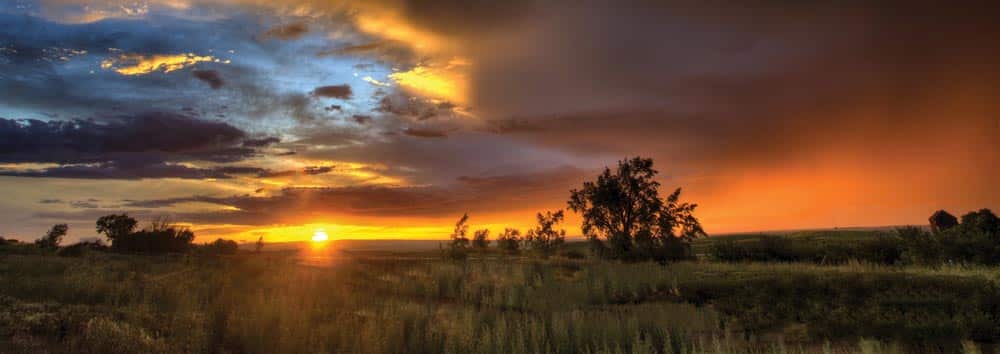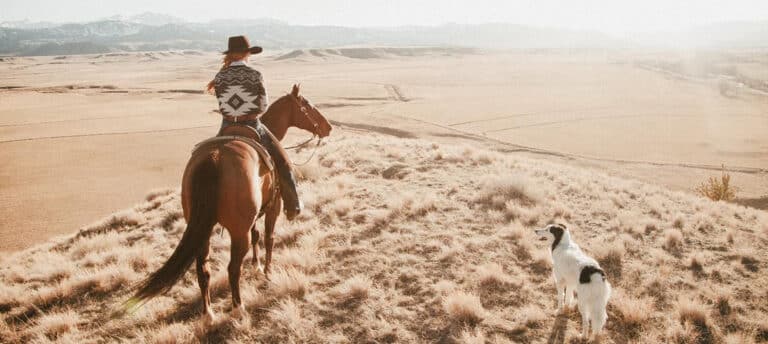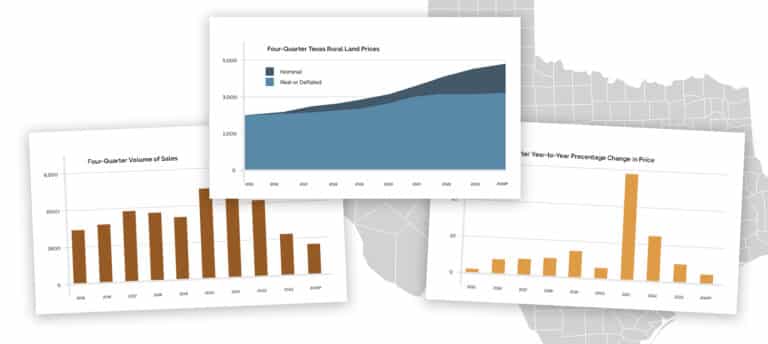Linda Campbell and husband David Mahn headed west. The couple, who lives in Kyle near Austin, was searching for a ranch they could manage for quail, which meant buying in either South Texas or West Texas. They had a budget, a wish list—and a vision.
“We wanted a property that was big enough to hunt quail at a price we could afford, so we headed west,” Campbell said.
They were looking for a fixer-upper, preferring a ranch that showed signs of hard use with little or no infrastructure development to raise the price.
“We didn’t want to buy buildings,” she said. “We wanted to buy unexpressed potential.”
Campbell, a wildlife biologist who retired from Texas Parks and Wildlife in 2014, puzzled their ranch broker. Every time they stopped on a new ranch, Campbell got out of the truck and immediately begin walking the property with her eyes focused on the ground instead of the views. Finally, the broker asked what she was looking for.
“At least one stalk of little bluestem, a native bunch grass that is a key component of good quail habitat,” Campbell said. “If I saw the right plants, even if they were grazed hard, then I knew we could bring the land back.”
In 2003 after a long search, the couple, who are long-time Texas Wildlife Association members, bought their first section of Grace Ranch in northern Stonewall County about 10 miles from Aspermont. There are only about 1,400 residents in the county, but one of them is Rick Snipes, a well-known, well-respected quail manager. The Snipes Ranch, a 5,000-plus acre mecca for quail, was located across the farm-to-market road from the Mahns’ ranch.
“I told Dave we needed to look at the Snipes Ranch and emulate what Mr. Snipes had done,” Campbell said. “It was strategic. We asked him for advice knowing that if we improved the habitat then the quail would come.”
The land, which was sandy, had been grazed long and hard. It was covered with thick shinnery oak that was choking out the desirable bunch grasses. The couple’s first move was opening up the landscape by selectively thinning the brush. They needed to establish nesting grasses and utilized EQIP cost-sharing funds from the NRCS to help with the brush work.
To achieve their goal, Campbell and Mahn modified a winning play from the Snipes’ management playbook. Snipes had used an aerial application of Spike® as his primary brush management tool. By applying varying amounts of the herbicide across the landscape, he created a checkerboard pattern of brush.
The Mahns wanted even more control over the herbicide application, so they used a pelleted version of Spike® that Mahn spread with a backpack blower. They avoided live oak mottes and hackberry trees. Over a three-year period, the brush would lose its vigor and eventually die, opening up the range and encouraging the spread of native bunch grasses. The couple also grubbed mesquite in selected areas and used prescribed burning when conditions allowed.
By 2006, bobwhites were beginning to come back. As an added benefit, the habitat improvement that primarily was targeted to quail began affecting the white-tailed deer herd. Its quality improved as well. In 2007, the couple spent the deer season pursuing a 17-point non-typical buck whose picture was captured on one of their game cameras.
“Our motivator was quail, but the bonus of being in West Texas is that we can also grow good deer,” Campbell said. “We tipped our management toward quail without compromising the deer.”
Then a multi-year drought struck which slowed but didn’t stop progress.
“In wet years, our deep sand country is beautiful and abundant, offering a ‘buffet’ of forbs that are essential to wildlife,” Campbell said. “In dry years, it’s tough and droughty. It’s kind of boom or bust.”
In 2011, a wildfire cut a swath across the landscape, taking out fences, mature trees and temporarily displacing quail, deer and turkey that had steadily increased in numbers as the habitat improved. The couple, once again, was patient and allowed the country to rest and recover. They rebuilt interior fences designed to enhance rotational grazing, and continued to improve water availability by installing in-ground guzzlers for wildlife and livestock water troughs. All allow overflow to create additional water for wildlife.
The long view paid off. It began raining again. The pace of recovery picked up. In 2014, quail numbers were high enough that the couple ran their dogs. In 2015, the quail population exploded and the couple enjoyed “good hunting action,” but were conservative in their harvests.
Although the ranch is a five and half hour drive from Austin, the couple heads west with family and friends as often as possible. Through the years, they have upgraded from a tent to a small cabin.
“We love the land—and we love sharing it with our family and friends,” Campbell said. “For us, it’s about being outside, feeding our family and friends, and enjoying nature, so we focus our efforts and our money on what matters most to us.”
Over time, they have added additional land and now own and manage 1,800 acres and lease another 300.
“The joy of owning land is getting out on it and figuring out how to make it better,” Campbell said. “The desire to leave it better than we found it motivates us just like it has motivated so many others.”
Adding Value to Land
As an added bonus, though, the intangible benefits of stewardship can also enhance the market value.
“While our primary reason for wanting the ranch wasn’t financial, a good quail ranch in the Texas Rolling Plains has to increase in value because there just aren’t that many places to hunt wild quail,” Campbell said.
Mark Matthews, a partner in Republic Ranches who is also a wildlife biologist based in Hondo, agreed that focusing on the ‘ecological bones’ of a property can add value, especially if aesthetics are taken into consideration.
“Good stewardship that improves the quality of the habitat and the availability of water generally is time and money well spent,” he said. “Although people may not be able to express why they are attracted to a piece of property, they respond to the aesthetics of productivity and of nature.”
In his experience seemingly little things can make a big difference in the way potential buyers perceive a recreational property. For instance, potential buyers respond more positively to a road that winds its way through a stand of bull mesquite instead of a straight road that is cut through a stand of switch mesquite. Brush sculpting that leaves a lot of edge trumps more “artificial” patterns such as checkerboard or strips.
Potential buyers respond more positively to stock ponds that are built in an irregular shape with the creek drainage curving around behind as opposed to perfectly symmetrical stock tanks plopped in the middle of pastures. If the surface water can be enhanced with a “park-like” setting that includes large trees, it’s even more appealing. In drought years, he noticed that people respond to right of ways and riparian areas that is re-seeded with native plants so there was cover alongside the ranch roads and creeks hinting at productivity when the rains returned.
“A majority of today’s buyers are looking for recreational property,” Matthews, who is a Texas Wildlife Association member, said. “Recreational buyers want the land to offer a promise of discovery. There are people who want to make the improvements themselves and then there are those who prefer to purchase a ‘turnkey’ property to maintain and manage.”
Before joining Republic Ranches, Matthews was involved in a partnership that sought out ranch properties with the intent of improving them and reselling them. Their target market was the people who were searching for a ‘turnkey’ property.
Generally, the partners looked for ranches that had been grazed continuously and hard with minimal water and infrastructure development. They considered the soil profile to determine if it would support diverse vegetation that in turn would support a species of interest such as white-tailed deer or quail.
“By improving the overall quality of the habitat and the availability of water, we knew we could enhance the value of the property most directly,” Matthews said. Location and ease of access were secondary considerations, he said.
While the partners got satisfaction from improving the land, it was a business so they began by determining the bottom line. Before purchasing a property, the partners would define the top of the local market, estimate the cost of the planned improvements and see if the difference between the two would allow them to turn a profit.
“The laws of conformity affect ranch properties just like they do residential properties,” Matthews said. “You wouldn’t build a million dollar home in a $250,000 neighborhood. The same holds true for ranches. When looking at land as an investment, it’s important to know what the market will bear in a specific region.”
As the partners began to plan their improvements, they would identify the property’s “sweet spot” whether it was a scenic water hole, a sandstone cliff, or a stand of ancient live oaks and make that the focal point. It would be the property’s epicenter with the improvements radiating from that location.
While the improvements would vary from property to property, they would be practical applications that enhanced the land’s productivity such as brush management, range reseeding, prescribed burning, water development, or the property’s usefulness such as road and fence construction. Whatever management practices the partners implemented, they ensured the property to remain would remain under agriculture or wildlife tax valuation.
“The wildlife valuation gives more management flexibility, but you have to have one or the other,” Matthews said. “In my experience, recreational buyers like knowing they hold a wildlife valuation because it speaks to their conservation ethic.”
If applicable, the partners would also try to acquire high volume water rights.
“Water is the driver of everything in Texas,” Matthews said. “Generally water rights are a good investment.”
While the partners would invest in the land, they avoided investing in homes or other facilities that are subject to personal taste.
“You can get into tricky waters quickly if you overbuild or overdevelop,” Matthews said. “To recover the cost of an extravagant home, you may have to price the land above the regional average. Then, you also have to find a buyer who is attracted to the style home you’ve chosen to build. In my experience, many recreational buyers want to spend their money on land not a big house.”
To that end, Matthews suggested identifying potential building sites on the ranch and improving their aesthetics, but not actually constructing anything. He also cautioned against inadvertently using prime home building locations for ranch infrastructure such as barns.
“People, even those who aren’t comfortable doing the initial restoration work, want to leave their imprint on the land,” Matthews said. “They, too, want to leave the land better than they found it, so it’s important to create opportunities where they can do that by building on the foundation you’ve laid.”


